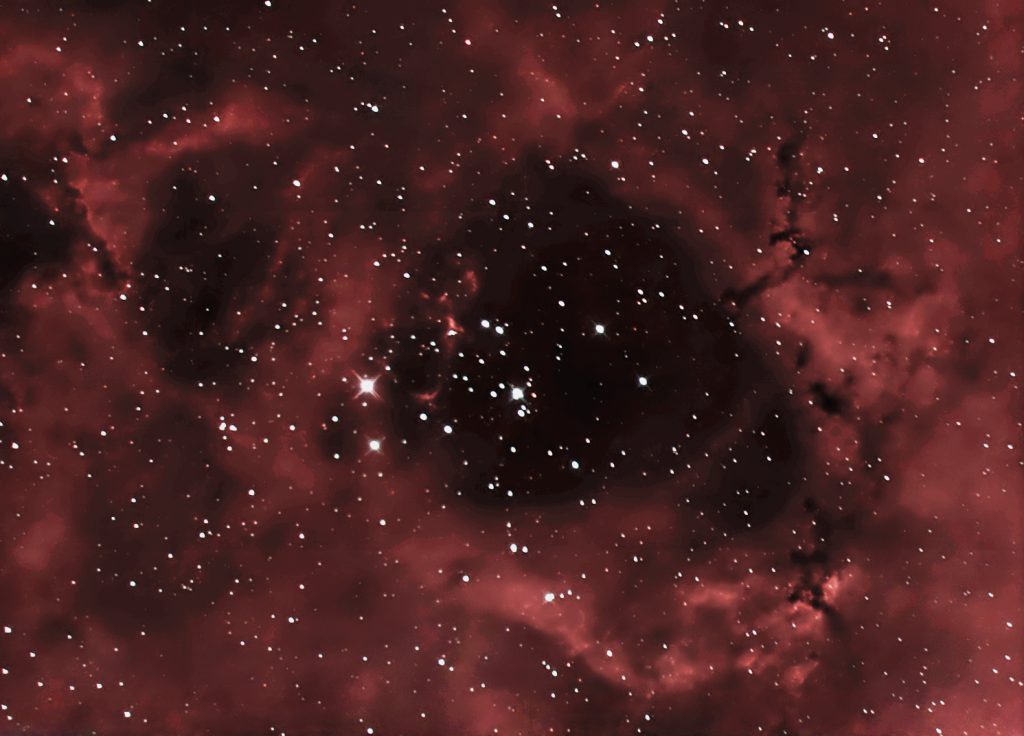NGC 2237-8, 44, 46
Rosette Nebula in Monoceros

10.1″ f/4.5, Mallincam DS432cTEC with 0.5 focal reducer and Optolong L-eNhance filter
Exposure = 10-15-20 sec, Live Stacked frames = 15-15-15 (45 total), Gain = 40 of 250
The Rosette Nebula, also known as Caldwell 49, is a very large diffuse galactic nebula, about 1.3 degrees across in the sky and 115 light years in size. According to O’Meara, it is located twice as far as the Orion Nebula (modern listing has it at 5200 light years vs. 1350 for the Orion Nebula) yet appears roughly the same in size which demonstrates the enormity of the cloud. This nebula was discovered in pieces, first by William Herschel; NGC 2237 and 38 form the western flank, while NGC 2244 forms the eastern. Astronomers theorize the dark space at center is an area where dust has been blown away by the high velocity solar winds of newly formed energetic stars.
NGC 2246 (Caldwell 50) is the brilliant cluster at center, with its brightest member 6th magnitude 12 Monocerotis, which is actually a foreground star 518 light years away. The cluster is about 18 light years across and is primarily composed of a couple of dozen 7th to 9th magnitude suns spanning some 20 arc minutes; the major shape is a couple of rows of 3 bright pairs in the center of the view. Burnham’s lists it as “very large, bright, little compressed.”
North at 2 o’clock, East at 11 o’clock